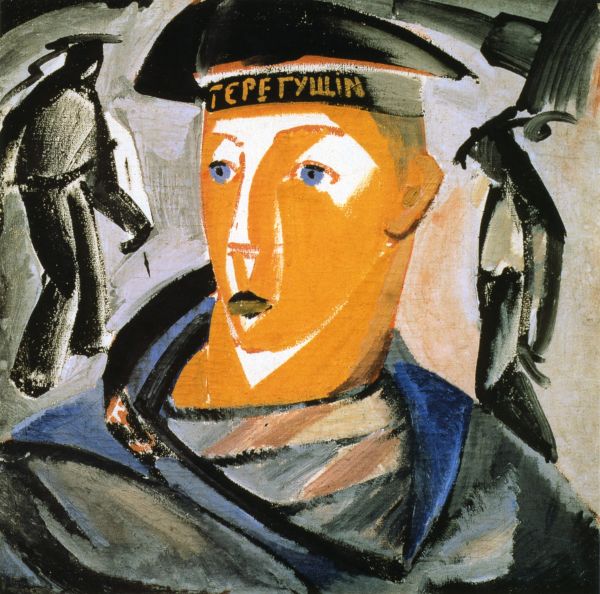|
|
Sailor. 1911

Tatlin Vladimir,
Oil on Canvas
71,5 x 71,5
Annotation
Although works by Vladimir Tatlin are not often encountered in art collections, the artist remains one of the unchallenged pioneers of the Russian avant-garde. Tatlin’s acquaintance and friendship with Mikhail Larionov led to the appearance of Neo-Primitive tendencies in his painting and graphic art in the early 1910s. The artist closely observed the environment, way of life and outer appearances of the sailors, fishermen, traders and other colourful inhabitants of the southern port of Odessa. The level of generalisation and the correlation of the image to the background, however, pay tribute to
Old Russian icon-painting. The result is a sharp contrast between the main character and the small figures in the background, which are arranged like the scenes in an hagiographic icon, creating a sharp and disquietening rhythm of contours and white patches on the sailor’s face and clothes. Sailor unites elements of self-portraiture and the typical. The painting manages to both incorporate personal characteristics and express the artist’s impulsive creative quests.
Author's Biography
Tatlin Vladimir
Tatlin, Vladimir Yevgrafovich
1885, Moscow -1953, Moscow
Painter, graphic artist, theatrical designer, author of architectural and engineering projects. Studied at the Penza School of Art (1904-10) and under Valentin Serov and Konstantin Korovin at the Moscow School of Painting, Sculpture and Architecture (1902-03, 1909-10). Contributed to the exhibitions of Donkey''s Tail (1912), Jack of Diamonds (1913), World of Art (1913), Union of Youth (1910-14), Tramcar V. First Futurist Exhibition (1915), 0,10. Last Futurist Exhibition (1915-16) and Store (1916). Member of the Unification of New Trends in Art (1922-23). Chairman of the Left Federation of Artists in Moscow (1917), head of the Moscow committee of Narkompros (1918-19). One of the initiators of the creation of the Museum of Painterly Culture, Museum of Artistic Culture and the Institute of Artistic Culture. Headed the department of material culture at the Institute of Artistic Culture. Taught in Petrograd, Kiev and Moscow. Headed the Narkompros Experimental Laboratory (1929-32

